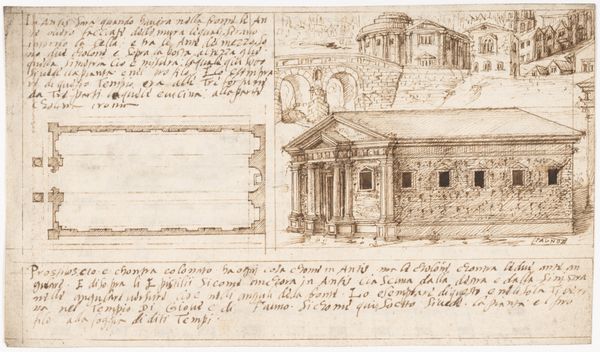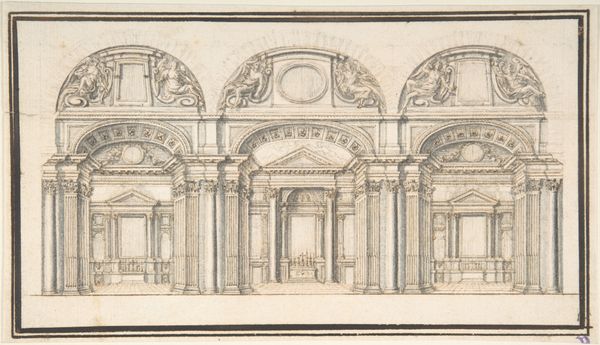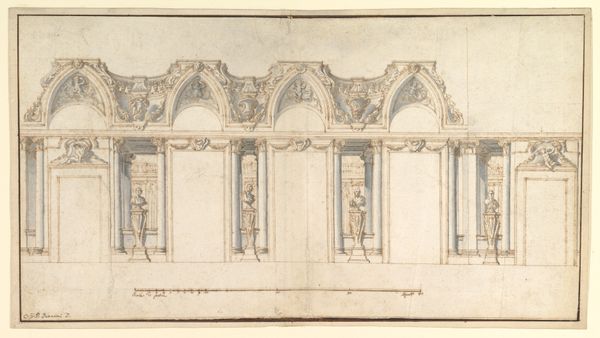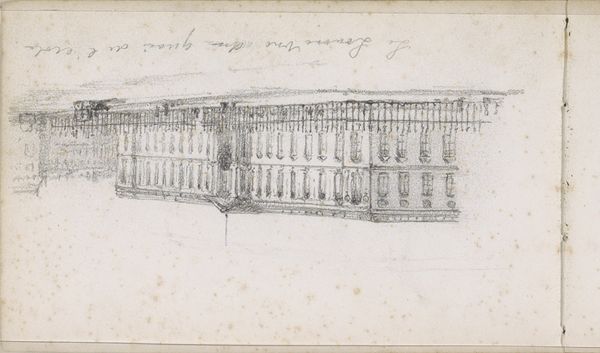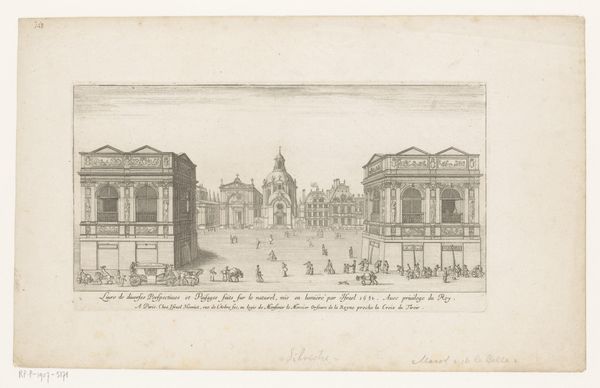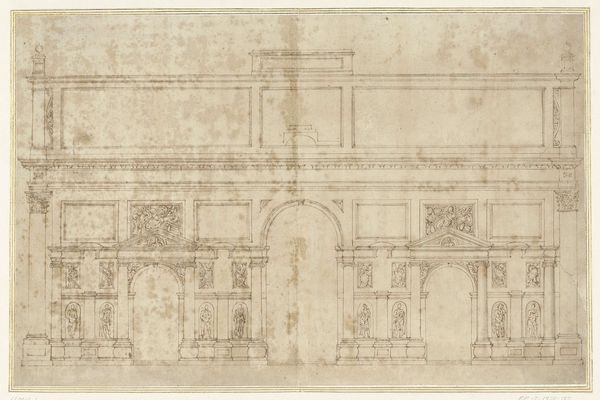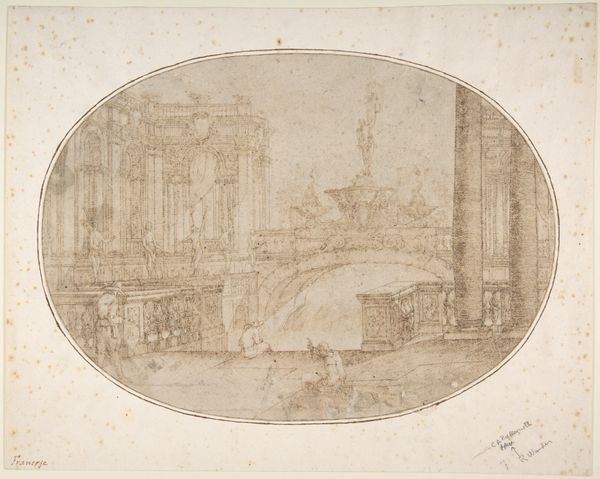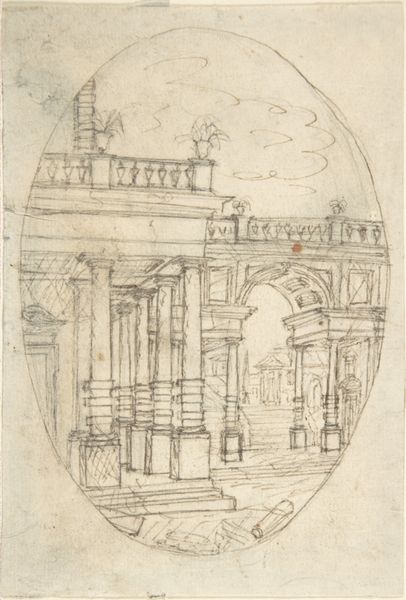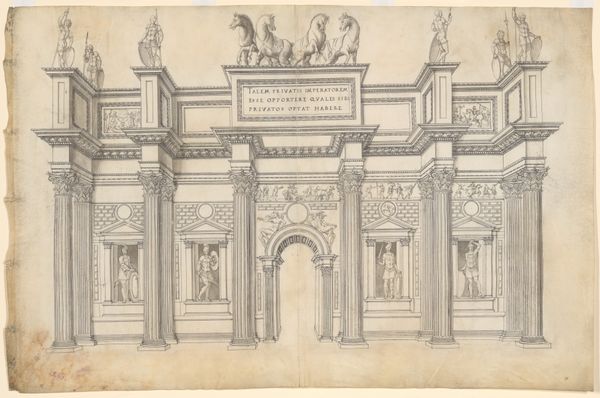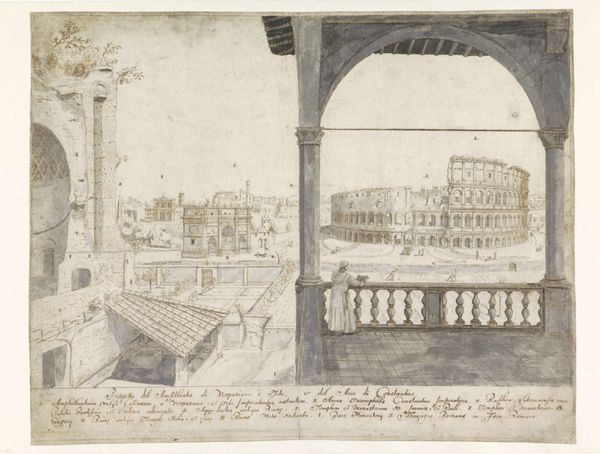
Recto: Temple Types: Amphiprostyle (Vitruvius, Book 3, Chapter 2, no. 4); Verso: Temple Types: Pseudodipteral (Vitruvius, Book 3, Chapter 2, no. 6). 1530 - 1545
0:00
0:00
drawing, ink, pen, architecture
#
drawing
#
pen sketch
#
mannerism
#
11_renaissance
#
ink
#
geometric
#
pen-ink sketch
#
pen work
#
pen
#
history-painting
#
italian-renaissance
#
architecture
Dimensions: sheet: 5 7/8 x 10 7/16 in. (15 x 26.5 cm)
Copyright: Public Domain
This drawing by a member of the Sangallo family, made in the early 16th century, shows temple designs based on the writings of Vitruvius. These plans offer us a glimpse into the architectural thought of the Renaissance, a period deeply influenced by classical antiquity. The drawing reflects the cultural movement in Italy at the time, which saw a renewed interest in the art and architecture of ancient Greece and Rome. Architects looked to classical texts like Vitruvius's "De Architectura" for inspiration, attempting to revive and adapt classical forms to contemporary needs. The Sangallo family, prominent architects in Rome, played a vital role in shaping the city's urban landscape during this period of intense building activity and papal patronage. Their work embodies the dialogue between classical ideals and Renaissance innovation. Historians study drawings like these alongside treatises, building contracts, and the remains of ancient structures to understand the complex processes of architectural design and construction in the Renaissance. Through such investigations, we begin to understand the conditions that shape the built environment.
Comments
No comments
Be the first to comment and join the conversation on the ultimate creative platform.
